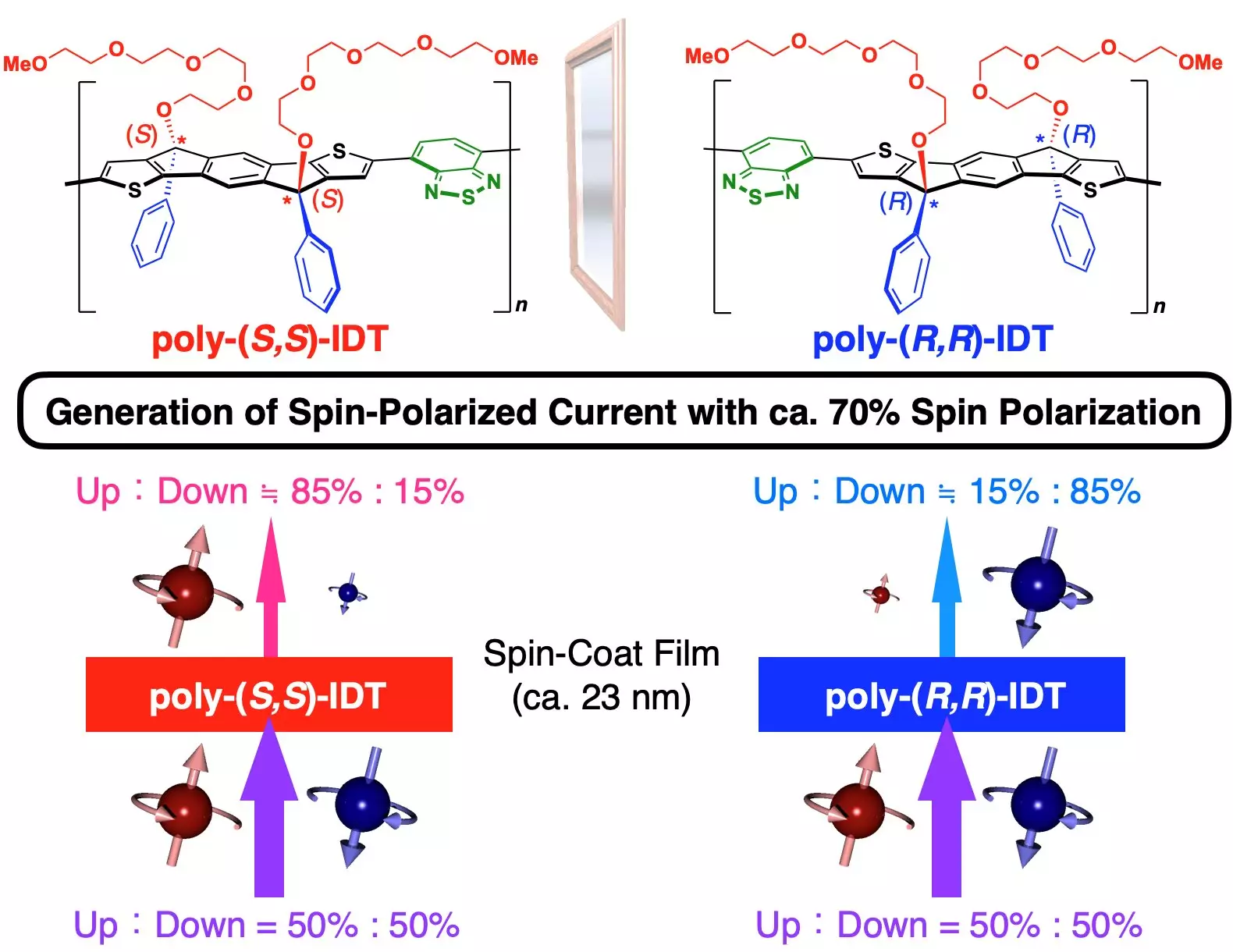Chirality is a fundamental concept in chemistry that has far-reaching implications in a variety of fields, including pharmaceuticals, materials science, and now increasingly in the realm of spintronics. By definition, chiral molecules exist in two mirror-image forms, akin to left and right hands, sharing the identical chemical structure yet exhibiting distinct physical properties. This unique characteristic is crucial as it influences how these molecules interact with light and electrical currents, leading to varied applications in technology. The recent work by researchers at Osaka University highlights just how significant chirality can be when harnessed for new and innovative applications, particularly in electronic devices that exploit the spin of electrons.
The research team successfully synthesized spin-coated chiral copolymer films using a specialized derivative of indacenodithiophene (IDT). This novel approach introduced chirality into the polymer backbones, setting the stage for the exploration of chirality-induced spin selectivity (CISS). The incorporation of IDT units not only contributed to the chiral nature of these films but also enhanced their interaction with polarized currents. By adopting a straightforward spin-coating technique, the production of these films is not just effective but also efficient, sparing researchers from the complexities often associated with traditional polymers that exhibit strong spin polarization.
The profound discovery surrounding the behavior of these chiral films lies in their capacity to act as spin filters. During experiments, the copolymers displayed notably different responses based on the polarization direction of the current applied, as influenced by an external magnetic field. This polarization, which can achieve levels of nearly 70%, reflects the robust characteristics of chiral molecules in feature-rich environments. The significance of this polarization cannot be understated—it suggests that these materials can potentially unleash powerful applications within the spintronics sector, where the traditional flow of electron charge can be augmented by utilizing electron spin.
The implications of this research extend beyond merely academic intrigue. Spintronics is an emerging field of electronics predicated on the principle of utilizing not just charge but also the spin of electrons for improved performance. The development of efficient techniques to produce chiral copolymer films offers an appealing avenue for advancing this technology. With applications anticipated in clean energy technologies, such films could fuel innovations that harness spin-polarized currents for enhanced efficiency and performance.
The Osaka University team’s study resonates with promise not just for immediate applications in spintronics but for the broader landscape of material science and energy technology. As research continues to unfold in this vibrant field, the potential for chiral copolymer films to revolutionize electronic devices holds thrilling prospects for both industry and academia alike. The integration of simplicity in their synthesis marks a significant step toward realizing practical, functional, and sustainable technologies of the future.

